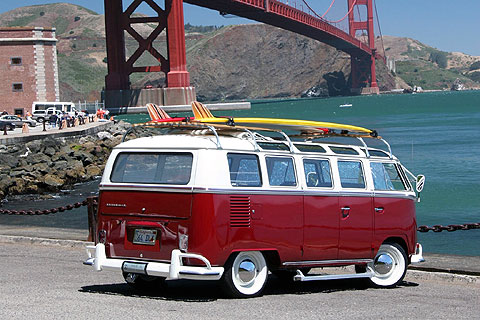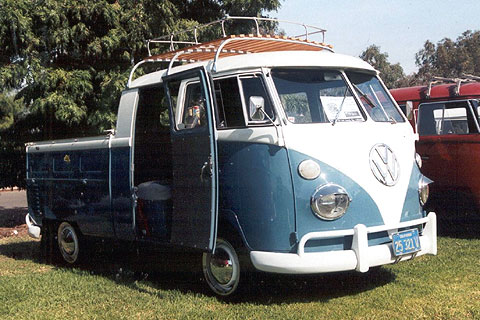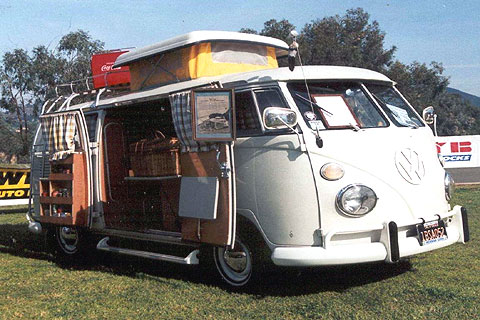 VW designed the Type II to carry the greatest amount of people and/or goods in the smallest packageVW Chameleon
VW designed the Type II to carry the greatest amount of people and/or goods in the smallest packageVW Chameleon The minivan was "invented" 60 years ago with the first drawings of the Volkswagen Transporter. The first eight Transporters rolled off the assembly line in 1949 and were shown to the public in early 1950. Looking at the Type II, as designated by VW, it is hard to believe it is based on the VW Beetle that appeared in the 1930s as the KdF-Wagen (Kraft durch Freude - "Strength through Joy"). The Beetle was designated the Type I.
VW designed the Type II to carry the greatest amount of people and/or goods in the smallest package, and with the greatest economy. The Type II would be offered in a variety of variants. The basic Transporter van did not have side windows in the rear compartment, but had double-opening side doors. There was a rear door that was hinged at the top, but loading was not easy because of the rear engine location.
There were a couple of pickups. One had a cab with a front seat for two. Another was a "crew cab" with four doors and front and rear seats. The pickups had a rather high bed because of rear engine location and the pickup had a flat floor. Not only did the tailgate fold down, but also the side rails. The design allowed several enclosed compartments under the bed.
The Microbus version came with a number of different varieties of window combinations starting with the base Kombi for carrying both passengers and cargo. The Type II Microbus had more windows and a more deluxe interior. The ultimate Type II was the Deluxe Microbus with skylight windows and canvas sunroof. Though small in size, the Microbus could carry up to nine in comfort. Often several more were crammed in. The seats could be giving the same cargo carrying capacity as the Transporter van.
Several aftermarket companies modified the Transporter into very compact campers, the most popular being the Westfalia campers. These modifications included adding sinks, stoves, iceboxes, seats that converted into beds, and "pop-up" roofs to give more headroom.
Like the Beetle, the Transporter was well made and its quality was excellent. The box-like aerodynamics did make the Transporters very susceptible to cross-, tail- and head-winds. Indeed, the Type II earned the nickname "Barndoor." Considering the type of vehicle it was, road handling really wasn't that bad. You could count the tar strips as you traveled down the highway.
Because of several hundred pounds of additional weight even before loading and its poorer aerodynamics it was slower than the Beetle. Sixty mph was tops unless going downhill, but with the rugged four-cylinder, air-cooled engine, you can cruise at all day long without damaging the engine.
The Transporter was a very popular in Europe and the USA. Almost two million were made through the 1967 model, about 15 percent of the total VW production. Sold in the US first in 1952, by 1960 they had captured 84 percent of the American import truck market. In 1964, the 25 percent tariff placed on trucks imported into the US really put a damper of VW truck sales. VW rebounded by concentrating on selling station wagon versions that were exempt from the tax.
Because of the Type II's popularity, the Big Three brought out similar vehicles in the early 1960s. These were the Ford Econoline, Chevrolet Corvan, and Dodge A-100. Just like the Transporter, the American versions came in station wagon, pickup, and van configurations. With its rear-mounted, air-cooled, six-cylinder engine, the Corvan came the closest to replicating the Volkswagen layout.
In 1967, VW brought out a completely revised Type II. While it was bigger, it lacked the character of the original models. Gone was the two-piece windshield, which opened on early models, and the sliding windows in the driver and passenger doors. The double side doors were replaced by a single sliding door.
Finally, we can't forget the VW bus and van, often with psychedelic paint jobs, was the vehicle of choice during the "hippy" movement In the 1960s.






